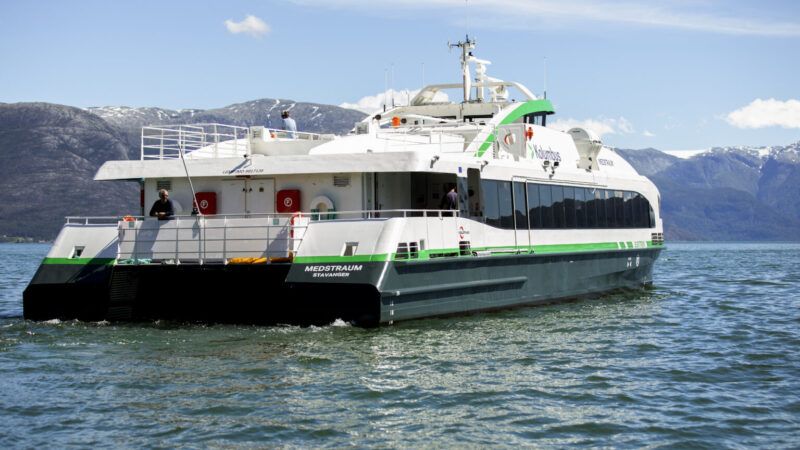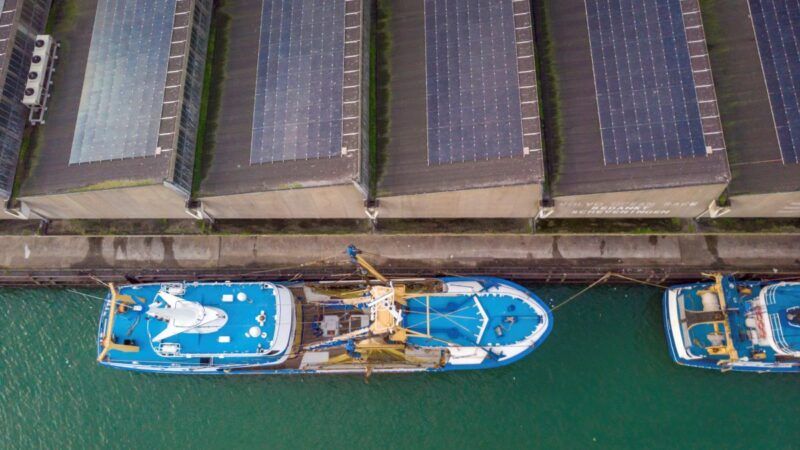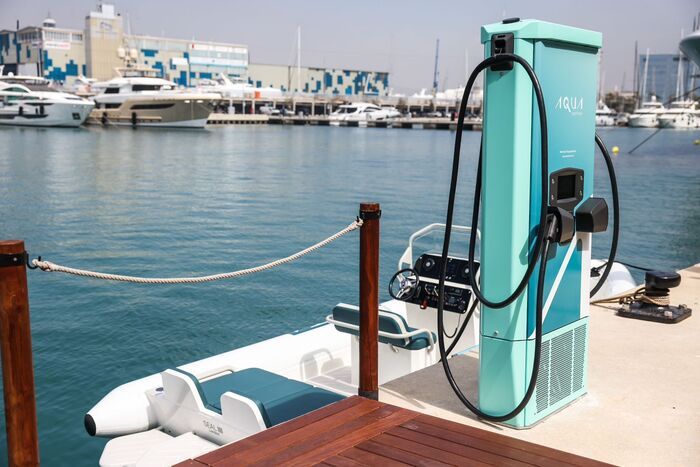 Aqua superPower electric charger at Marina Vela (Port de Barcelona)
Aqua superPower electric charger at Marina Vela (Port de Barcelona)
Ports boost electrification of recreational boats
The installation of electric chargers for yachts offers ports the opportunity to position themselves as agents of reference in the decarbonisation of the recreational boating sector. The Port of Barcelona has taken an important step in this direction: a new charger located in Marina Vela contributes to the creation of a corridor of electric chargers along the entire Mediterranean coast.
 Aqua superPower electric charger at Marina Vela (Port de Barcelona)
Aqua superPower electric charger at Marina Vela (Port de Barcelona)
The first electric charger at the Port of Barcelona' Marina Vela
The electrification of recreational craft, whether electric or hybrid yachts, is here to stay. The benefits are numerous: electric and hybrid boats are quieter and cleaner, help decarbonising the nautical sector and reduce the environmental impact of sailing. The number of yachts, sailing boats, catamarans and other electric pleasure craft is expected to grow in number and popularity over the next few years.
The Port of Barcelona has taken an important step in this direction with the installation of its first fast charger for electric boats at Marina Vela. This will allow users to charge up to 75kW in short periods of time, ranging from 20 to 40 minutes.
Behind the installation of this charger is Aqua superPower, the first company to develop a global marine fast charging network, in partnership with ChargeGuru Business Services. Before installing its charger in Marina Vela, Aqua superPower had installed it in Port de la Ràpida, in Mallorca. This gives a boost to the charger corridor along the Mediterranean coast.
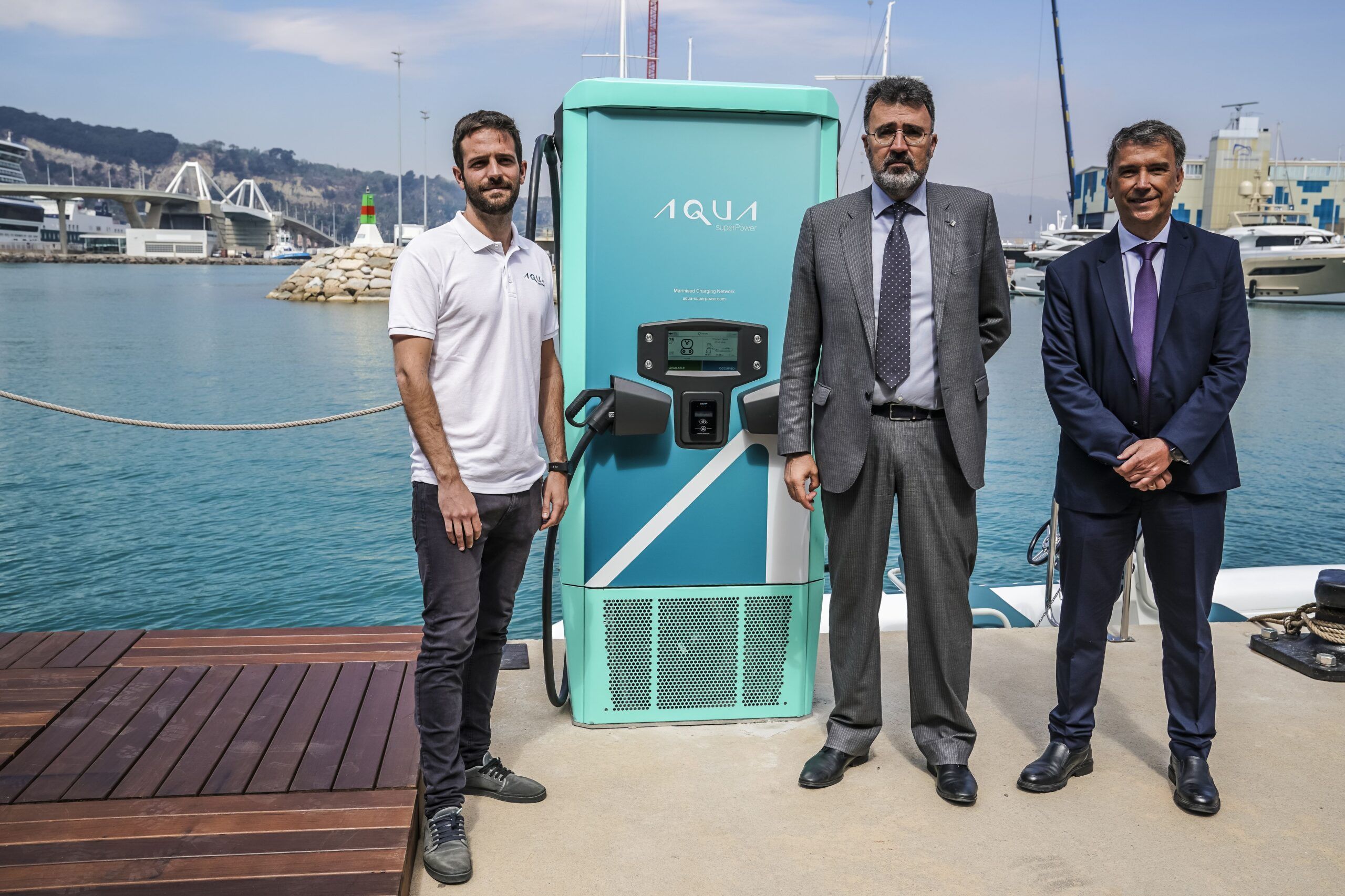
"Having an Aqua superPower charger makes it possible to provide a fast charging service for electric boats, whether for users of Marina Vela or anywhere else," explains Pedro Companys González, country manager of Aqua superPower in Spain and Portugal, for whom, in addition, "it is an important step to promote the decarbonisation of the marine environment."
The solution offered by Aqua superPower and already available at Marina Vela has two hoses, with CCS2 (Combined Charging System) connectors, so that two boats can be connected to the charger at the same time. "The charger itself distributes the charging power between the two boats, depending on each one’s demand," explains Companys.
"The charger also has an application designed and developed by us, specifically for the marine environment, which allows charging through this same application, an RFID card or contacless. All you have to do is register, create a user and connect one of the hoses to the boat's connector to charge," adds the Aqua superPower manager.
Electric boat chargers from Norway to Venice
This initiative follows similar ones developed in Europe in recent years. Thus, in 2021, a group of companies initiated the development of an electric ship charging network in Norway. This group of companies included the electric boat motor manufacturer Evoy together with the electric utilities SFE and BKK, the municipality of Kinn and the port of Florø. The stations and the fast charging system are overseen by BKK subsidiary Plug, which already builds and operates shore power plants for ships.
In the eastern Mediterranean, in Venice, a network of charging stations for electric boats is also being developed camouflaged in the classic 'palinas' (wooden mooring poles) that dot the riverbanks.
In the city of canals, the initiative is the brainchild of start-up e-concept, together with a host of technology partners: Italian electric boat motor companies Huracan and E-dyn, battery manufacturer Femak, electric boat distributor AQA Marine, charger manufacturer EDN, and others.
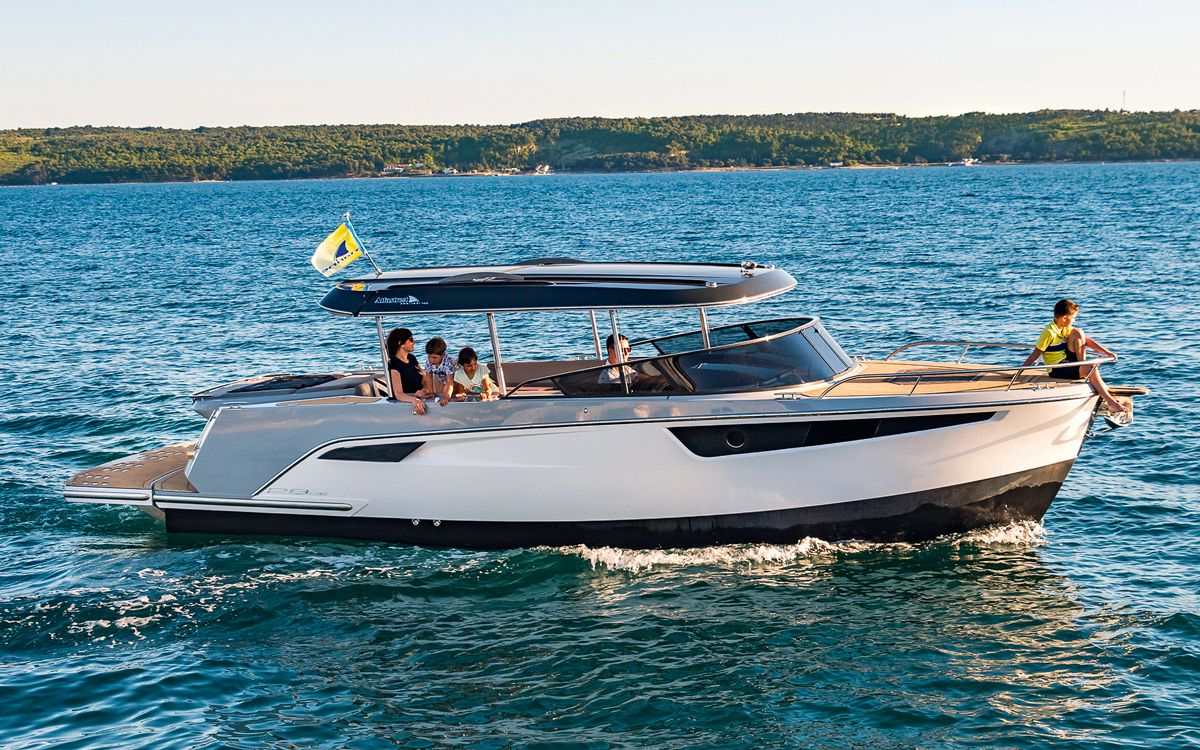
Electrification for recreational vessels: a growing sector
Today, power, energy and distance requirements make full electrification of the boating sector difficult. However, sport and leisure boats may become an exception: the fact that they are smaller and lighter and run shorter and often well-defined routes has contributed to a growing market for electric leisure boats.
According to the report Electric Leisure & Sea-going Boats and Ships 2021-2040', tens of thousands of electric and hybrid leisure boats are sold every year. But for this sector to take off, it is necessary to ensure one fundamental aspect: numerous, safe and efficient charging networks.
"Charging facilities are essential to accelerate the use of zero-emission boats. I always refer to the saying 'what came first, the chicken or the egg?' Without a good network of chargers and an efficient infrastructure, users will not switch to electric mobility, as they will not be sure of being able to make the necessary charges and have sufficient autonomy for their journeys," warns Companys.
The creation of an efficient network of chargers can facilitate the mobility of electric boat users regardless of the location of their mooring, as well as allow charter companies or passenger transport companies to move between different points several times throughout the day.
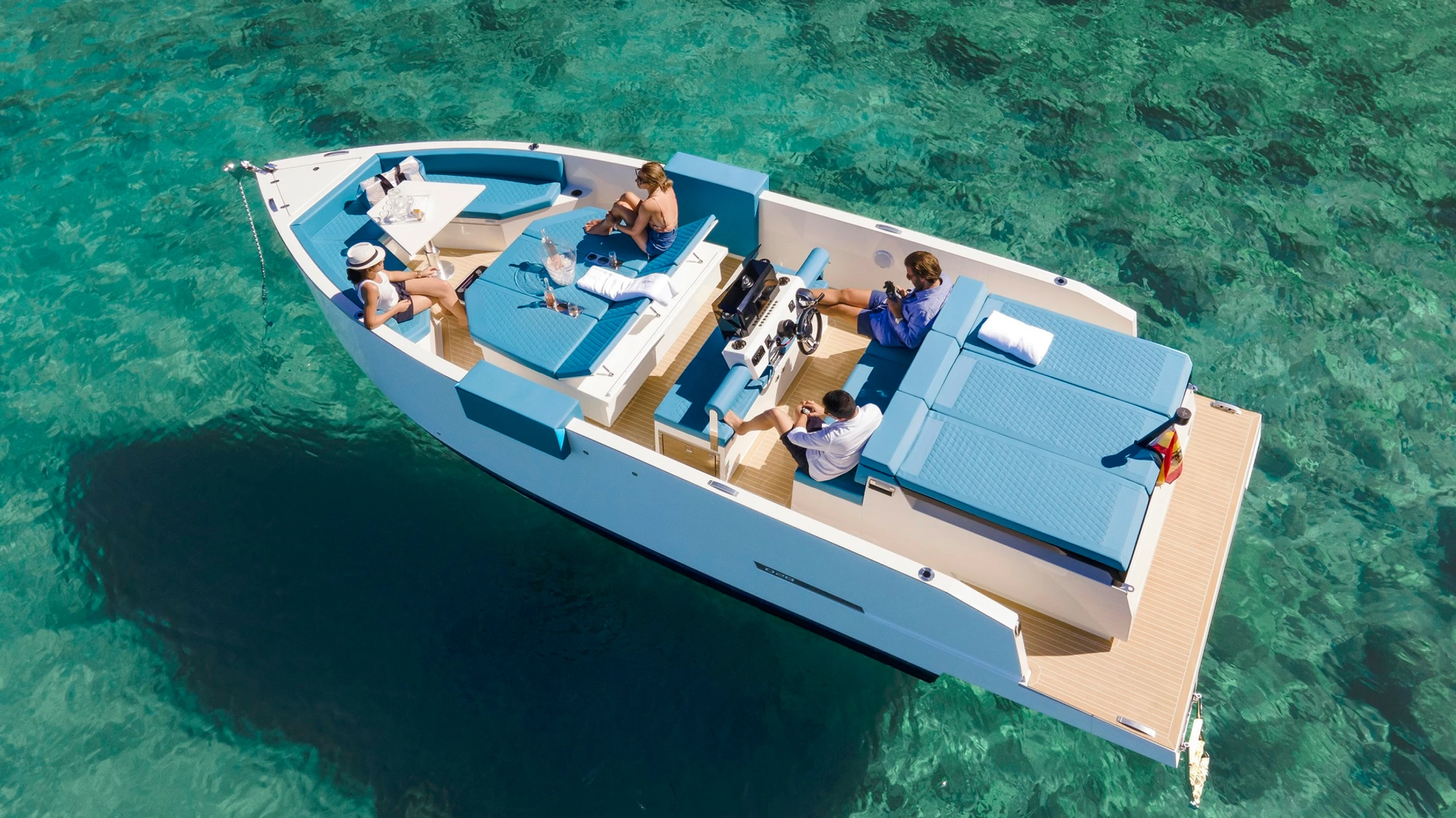
Technological innovation in yacht electrification
Technological innovation is another of the pillars that can favour the electrification of recreational boats.
A good benchmark in the sector is ZEN Yachts, a Maltese company that designs and produces catamarans and other zero-emission sports boats equipped with solar panels and the latest technology. The firm has offices and a showroom in Barcelona, in Marina Vela. Julien Mélot, CEO of ZEN Yachts, presents them in this corporate video:
Another example is Vita Yachts, which has developed a range of 100% electric boats compatible with different charging networks. During the presentation of the Aqua SuperPower charger at Marina Vela, Vita Yachts offered test rides on board the Vita SEAL to show how its technology and that of the fast-charging chargers is fully compatible.
Many other electric and hybrid boat companies, such as De Antonio Yachts, have also chosen the Port of Barcelona to set up their commercial base, partly because of the attraction of the America's Cup and the technological innovation it involves.
At the same time, different innovative initiatives are taking place along the European coastline and in other countries around the world.
The creation of an efficient network of chargers can facilitate the mobility of electric boat users as well as allow charter companies or passenger transport companies to move between different points several times during the day
The market for electric and hybrid recreational boats
A report by Mordor Intelligence points to Europe as the region where the market for electric and hybrid boats will grow the most in the coming years. It is followed by North America and especially the United States, a place where a high percentage of the population is keen on boating, and Asia.
The installation of fast electric chargers in Europe has also had Aqua superPower's footprint. The company has placed chargers in the UK, Italy and France, in such iconic ports as Monaco, Cannes and Venice, and is also working in the Nordic countries and Portugal.
"The UK is the region where Aqua started and which currently has the most chargers installed. The first of this network was installed in Plymouth," explains Companys. "France is the most advanced country in terms of regulation to favour energy transition and decarbonisation. The United States, on the other hand, is growing fast and seizing the moment," he adds.
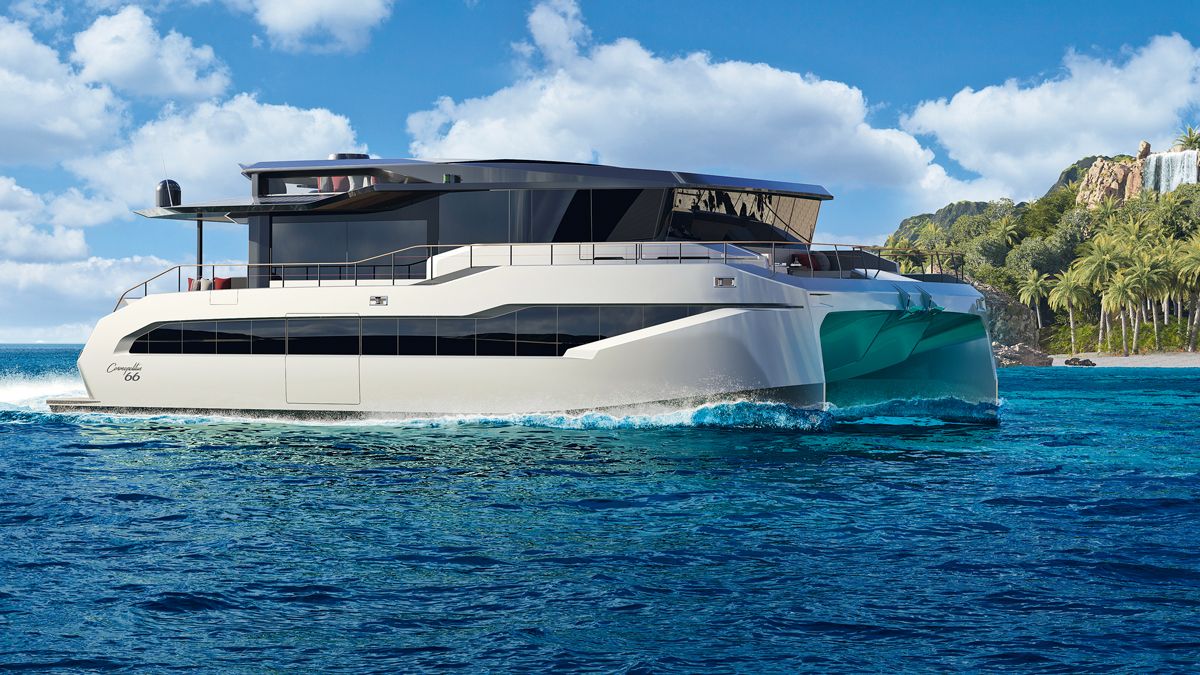
The presence of electric chargers for recreational chargers in different parts of Europe and the world is an important step towards making the sector more sustainable.
And it is also an opportunity for the ports to position themselves as a reference agent in the decarbonisation of the sector and in the search for a zero emission system.
TO KNOW MORE
- IDTechEx Report Electric Leisure & Sea-going Boats and Ships 2021-2040
- Mordor Intelligence Mercado de barcos y barcos eléctricos: crecimiento, tendencias y pronósticos (2023 - 2028)
- Motorboat & Yachts: Best electric boats: A-Z of the top hybrid and all-electric models



